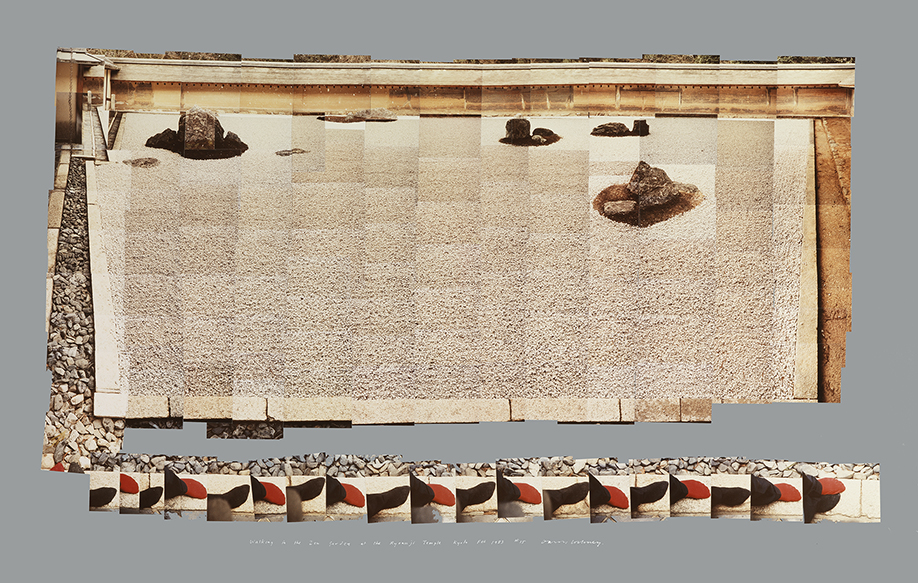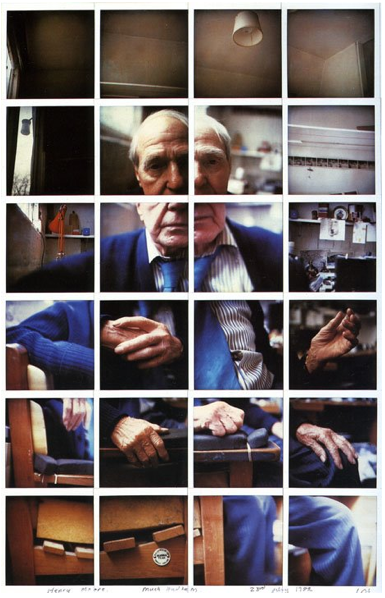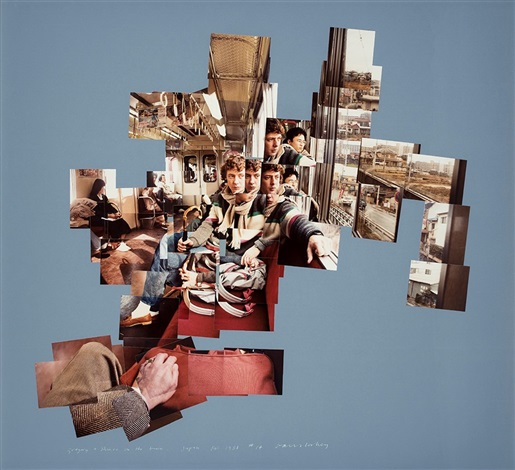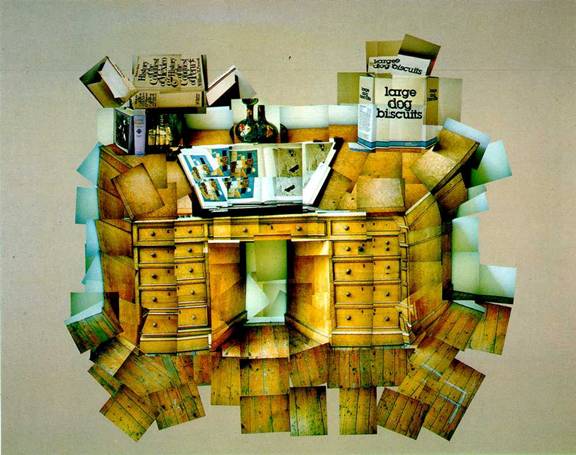
David Hockney is an English painter, draughtsman, printmaker, stage designer and photographer. Within his photography he is famous for something he did called ‘joiners’. During the early 80’s Hockney began to create ‘joiners’, now they are photocollages. When he first began to produce these he did them with Polaroid prints and later on he did them with 35mm, commercially processed prints.
Hockney’s work reflects his long running interest in optics and perspective and sees him extend it onto family members and friends as well as landscapes and interiors. We are presented with familiar figures from his prints such as Ann Upton, Celia Birtwell and Gregory Evans as well as familiar settings such as the Grand Canyon and the pool of his home in Los Angeles. Whereas before Hockney had dismissed photography as ‘All right if you don’t mind looking at the world from the point of view of a paralysed cyclops-for a split second,’ here we see him engaged in a new fascination with the medium. After so long challenging himself across the mediums of paint and print it is unsurprising that he would finally come round to the medium that descends is often described as ‘drawing with light’. What he saw as a fixed viewpoint became something fluid and dynamic when doubled endlessly to create a composite image.

With works such as Freda Bringing Ann & Me A Cup Of Tea he pushes the medium even further, allowing the coloured background to add another element to the composition, while details of the scene spiral out from the middle. Meanwhile in George, Blanche, Celia, Albert And Percy, London, January the traditional family portrait is subverted, the many photographs adding layers of time and movement, documenting changes in expression and light, to become a tableau vivant.

How he created joiners was by taking multiple and varying Polaroid shots or photolab-prints of an individual subject. Then with these shots he would arrange them into what almost looks like a patchwork, to create on overall image. One of Hockney’s first ‘joiners’ was a photomontage of his own mother. Aiming for a Cubist feel, he established this through taking shots at different perspectives and at different times. His work ranges from Landscape, Pearlblossom Highway #2 to portraits, Kasmin 1982, and My Mother, Bolton Abbey, 1982.

This is probably a closer description of how we see the world – from multiple viewpoints that are then pieced together by our mind. In this joiner by David Hockney he has tried to create this effect out of 24 Polaroid prints. He did this because he was interested in how we see and depict space and time. His is interested in how we turn a 3 dimensional world into a 2 dimensional image, how perspective is used in western art and how space is treated differently in non-western art. He did not particularly make joiners because he liked the novel effect of using photographs in this way. However, he did like the way this technique allowed the viewer to read space. He sometimes laid the images out in a neat grid.
IMAGE ANALYSIS

This piece is called Gregory and Shinro on the Train. In this image the focus is primarily on the man in the image, captured looking in different directions whilst the lighting captures different parts of his face. You can also see Hockneys hand in the bottom left hand corner. The lighting is coming from the outer squares and drastically changes depending on where you look. The colours in the image are also mainly quite dull so the red seats catch the viewers eye especially as they’re positioned closer then other aspects of the image. The other subjects in the photo are looking away from the camera, but the main subject is looking towards it although not making eye contact.



